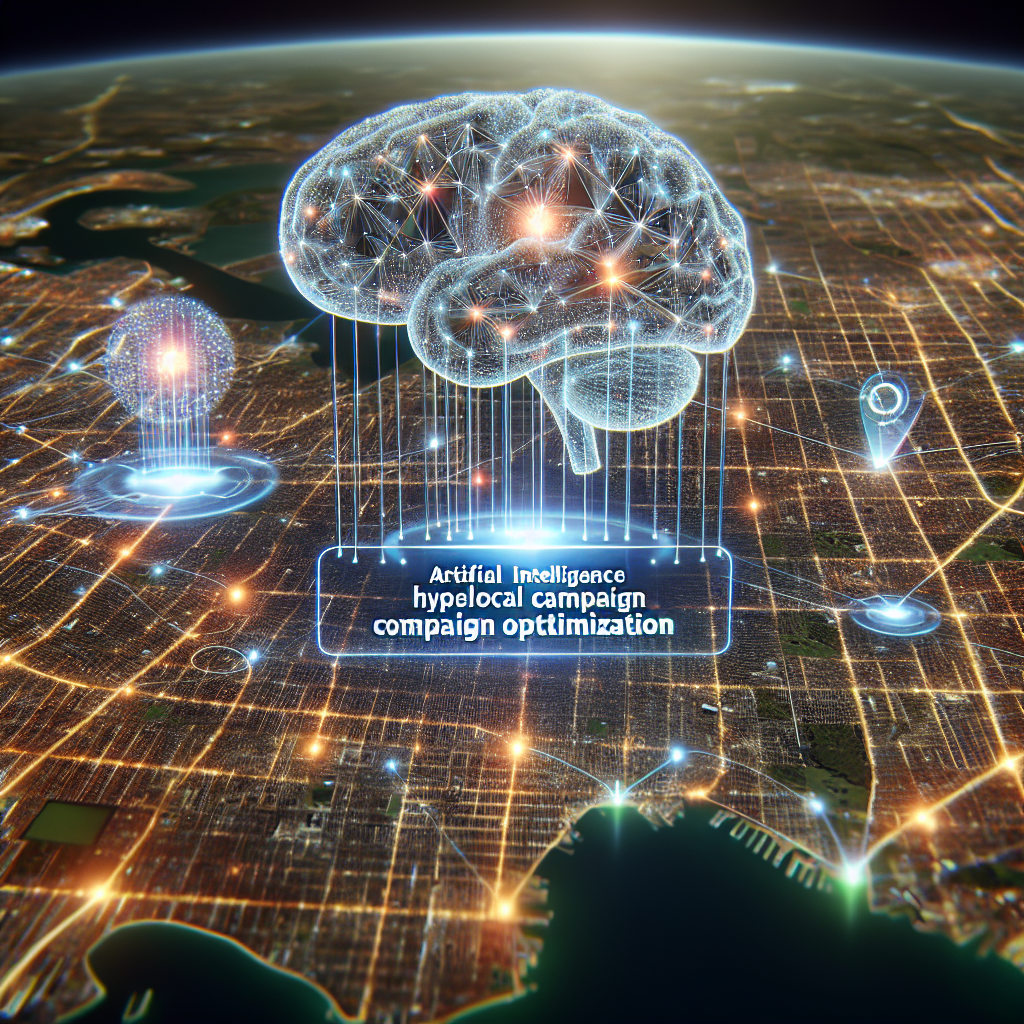Understanding Hyperlocal Campaigns
Hyperlocal campaigns are highly targeted marketing efforts that focus on a specific geographic area, typically smaller than a city or town—down to neighborhoods, streets, or even individual blocks. These campaigns are designed to engage a hyper-targeted audience with messaging and promotions that reflect their local context, preferences, and behaviors.
With the rising expectations of personalized experiences and the increasing capabilities of data-driven marketing, hyperlocal campaigns have become essential for businesses with localized services, such as restaurants, gyms, retail stores, or service providers. The challenge, however, lies in managing, scaling, and optimizing these campaigns effectively. This is where Artificial Intelligence (AI) can make a transformative impact.
The Role of AI in Hyperlocal Marketing
AI empowers marketers to overcome the complexity of hyperlocal campaigns by automating vast amounts of data analysis and decision-making. Here’s how AI plays a pivotal role:
- Data Aggregation: AI can collect and synthesize data from multiple sources—such as customer behaviors, mobile location data, local weather, and nearby events—to form a comprehensive picture of local trends.
- Audience Segmentation: Machine learning algorithms can identify micro-segments within local communities, allowing for the creation of personalized messaging specific to very small geographical clusters.
- Predictive Analysis: AI models can predict customer behaviors based on historical data. For instance, businesses can pinpoint when their local consumers are most likely to engage, helping tailor timing and channel selection.
AI-Powered Hyperlocal Ad Targeting
Hyperlocal targeting requires geographically rich customer insights that traditional tools might overlook. AI enables smarter, more contextually relevant targeting by:
- Integrating real-time GPS data to serve location-based online ads only when customers are within a specific radius of a store.
- Using Natural Language Processing (NLP) to analyze local social media trends and reviews to adjust messaging tone and product offerings in real-time.
- Customizing creative assets using AI-generated variations that reflect local language, dialects, and cultural nuances.
This precision not only improves conversion rates but also enhances customer relationships and brand trust.
Dynamic Content Customization and Personalization
AI allows marketers to move beyond static advertising content. Using AI tools like generative content models and real-time analytics, businesses can dynamically adjust marketing creatives based on the unique traits of a micro-region. For example:
- A chain restaurant might use AI to automatically showcase a different daily special for each city block, based on previous customer preferences and purchase trends.
- Retail stores can run exclusive local promotions that reflect local holidays, weather patterns, or nearby community events.
These hyper-localized personalizations are made possible by AI’s ability to process localized intent signals at scale.
Optimizing Campaign Performance Through Machine Learning
AI doesn’t just set up campaigns—it continuously optimize them. Machine learning algorithms monitor campaign metrics in real-time to:
- Identify under-performing locations and recommend corrective actions, such as reallocating budget or changing ad creative.
- Adjust bidding strategies based on the predicted intent of nearby users.
- Provide A/B testing across different hyperlocal variations without manual oversight, learning which elements perform best per location.
This continual learning loop results in higher ROI and ensures that marketing spends are effectively aligned to localized opportunity.
Challenges and Considerations
While AI offers immense advantages, there are considerations businesses must address when leveraging it for hyperlocal campaigns:
- Privacy Concerns: Utilizing personal and location-based data requires strict adherence to data privacy regulations such as GDPR and CCPA.
- Infrastructure: Companies need robust data platforms and AI tools capable of handling hyper-granular data insights at scale.
- Data Quality: AI models are only as good as the data they feed on. Ensuring accurate, real-time, and location-specific data is crucial for effectiveness.
Future Outlook of AI in Hyperlocal Marketing
As technology continues to mature, AI-driven hyperlocal campaigns will become even more autonomous and intuitive. With advancements in edge computing, 5G connectivity, and the Internet of Things (IoT), marketers will be able to capture and act on micro-moments even more effectively. This will pave the way for predictive, proactive hyperlocal marketing tactics where AI anticipates consumer needs before they are even expressed.
Conclusion
AI is revolutionizing hyperlocal campaign optimization. By automating data analysis, refining targeting, personalizing content, and enabling real-time performance improvements, businesses can create marketing experiences that are deeply personal and contextually relevant. For companies looking to compete on a local scale with national-level sophistication, adopting AI-powered hyperlocal strategies is not just advantageous—it’s imperative.






